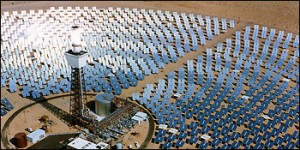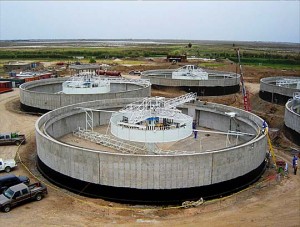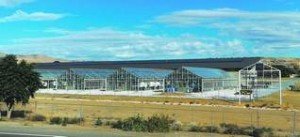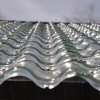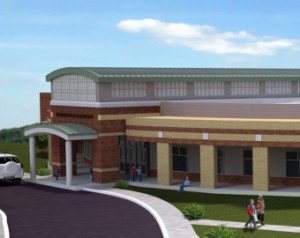Archive for the ‘Green Roofing’ Category
IKEA Goes Forward in Solar

IKEA, the large Swedish furniture company, recently announced its plans to install 4,452 solar panels on the roof of one of their stores in West Chester, Ohio. The 344,000 square foot store is expected to produce 1.3 million kilowatt hours per year.
IKEA plans on adding solar panels to 5 other U.S. locations, including 3 in Maryland and 2 in Pennsylvania. The company is hoping installation will be completed by fall of 2011. IKEA has already installed solar panels at 18 other U.S. locations. The Brooklyn IKEA store has one of the city’s largest rooftop solar arrays.
The 6 new solar arrays will total more than 6 megawatts and utilize more than 22,000 solar panels. While reducing 4,860 tons of carbon dioxide in the air, equivalent to removing 867 cars off the road.
IKEA has implemented a number of other sustainable efforts, including solar hot water systems that are already installed nationwide. Recycling 75% of their paper, wood and plastic waste. And using energy efficient HVAC, lighting systems, skylights in their warehouse and water conserving restrooms. The new solar systems are part of IKEA’s continuing effort to run on 100% renewable power.
Rooftop Solar vs Large Solar Power Plants
Roof top solar panels may be better for the environment than the large solar projects rushing to take over large chunks of public land in the Southwestern United States.
Billions of dollars in tax incentives, cash grants and loan guarantees have brought hundreds of large solar companies to the open deserts to cash in on the sun’s rays.
Some advocates are claiming that the governments push for renewable energy may be overshadowing the deserts ecological balance.
The majority of the solar plants will be built on public undeveloped land, turning these sites into permanent industrial zones. Solar Done Right, a coalition of public land activists, believes the government could take advantage of already disturbed lands. The EPA has identified hundreds of thousands of acres of such sites.
The massive solar power plants will do irreversible damage to our deserts. Threatening rare species of animals and plants, using precious groundwater, and creating traffic to and from these locations. These lands are also home to historic, prehistoric and culturally important sites.
Advocates believe the vast urban landscape is a better alternative for large solar projects than bulldozing our deserts.
The government owns many buildings with large flat roofs that are suitable for large scale solar projects. Already across the United States, post offices, state capitals, universities, large retail chains, homeowners and many more are putting up roof top solar panels.
In our rush to go green, we need to slow down and look at all the possibilities and alternatives to make sure we aren’t sacrificing one resource to save another.
NY Water Treatment Plant Goes Solar
Binghamton, NY received a new 50 kilowatt photovoltaic system at their water treatment plant. The solar panel array is expected to supply more than 10 percent of the city water treatment plants total demand.
This is the city’s first on-site renewable energy generator. The system is composed of 18 arrays with a total of 204 photovoltaic modules. Earthkind Solar of Kingston NY built and installed the panels.
A federal Recovery Act grant from the New York State Energy Research and Development Authority paid $300,000 plus the city’s taxpayers paid $56,000 for the system. It is estimated to save the taxpayers $576,000 over the next 25 years. The array will not only cut the expenses for the city but also shrink the city’s carbon footprint by 23 tons per year.
The water treatment process removes pollutants and helps keep our waterways clean. The treated water is then released into a local river or the ocean.
Many wastewater treatment plants across the country are already online with a solar panel array, or are making plans to install their own photovoltaic systems. Cities in Colorado, California, Texas and West Virginia to name a few.
Solar Panel Carports for Industry, California
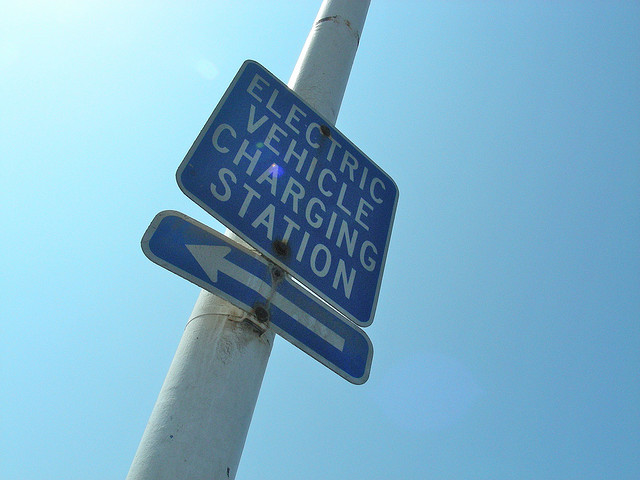
Image via Wikipedia
The city of Industry in California is making plans to build solar paneled carports, and electric car charging stations at the Metrolink public transportation station.
The plan is for 1,000 carports, which would have space for 500 cars in the northwest corner of the parking lot. Southern California Edison will purchase power from the 2 megawatts of power generated by the photovoltaic solar panels.
The Industry City Engineer, J.D. Ballas, said the city signed an agreement with Southern California Edison which will purchase power produced by the solar array for 20 years.
The electric car charging station will also be included in the planning of the Foothill Transit 5 story park and ride structure. The charging station will not use the solar power generated by the carport panels, but will instead be powered by a separate source to accommodate for rainy or overcast days.
The 1.2 million dollar project is being built with the cities general fund. Bids for the project are being accepted now for construction to begin this summer with a projected completion date of February 2012.
Green Roof Conference
About 1,000 delegates from around the world have been attending the green roof conference in Vancouver, British Columbia. From November 30 to December 3, at the 8th annual CitiesAlive green roof and green wall technology conference at Vancouver Convention Center. Jointly organized by Science World and B.C. Institute of Technology.
One of the reasons Vancouver was selected for the conference location is they are seen as the world leader in green roofs. The convention center has the largest green roof in Canada at 2.5 hectare. (25,000 sq m). Green roofs have long been used to cut energy costs, they are also a way to recycle rain water and decrease the burden of city sewage systems, and reduce the heat island effect by reducing the temperature of the roof and the surrounding area.
The three day conference has included workshops, seminars, trade shows and tour of Vancouver’s green roofs. Keynote speakers include David Tilley green roof researchers from University of Maryland and Paul Kephard, a green roof designer who founded the consulting company Rena Creek. Also in attendance is building designers, urban planners, landscape architects and environmentalists all to share information on green technology.
“We will explore the limits of integrated thinking with a focus on moving the industry to a new level of understanding of the many roles we can play to reduce green house gas emissions and adapt our cities to the negative impacts of climate change,” say conference organizers, Jeffrey Bruce and Steven Peck, of Green Roofs for Healthy Cities.
New Recycling Facility in Nashville
Nashville Tenn. gets asphalt recycling center, turning roofs into roadways. This is the first asphalt recycling facility to open in Nashville, as an ongoing alliance between Heritage Environmental Services and Owens Corning Roofing and Asphalt. Contractors can drop off old shingles which in turn get ground up and used in paving material for local roads.
Local contractors are pledging to recycle 100% of the roofing job waste. The average home yields 3 tons of shingle waste. Estimated at over 10 million tons of tear-off-shingles that go into landfills each year. The high content of asphalt is reason the shingles can be used to pave roads.
President of Owens Corning roofing and asphalt LLC, Sheree Bargabos stated “This program makes recycling easy and provides our contractor network with an opportunity to clearly differentiate themselves by providing a complete roofing system including a sustainable end-of-life recycling option for old shingles.”
Rodney pierce, director of sustainable solutions at Heritage Environmental Services said “Our shingle recycling programs are designed to provide roofing contractors with a beneficial and cost effective alternative to disposing of tear-off shingles in landfills.”
Heritage corporate headquarters in Indianapolis In. with recycling centers in Indianapolis, Cincinnati, Chicago, Denver, Indiana, and Minneapolis. Tennessee is the seventh Heritage Shingle Recycling Program in US cities.
Nevada University Greenhouse Goes Solar
The University of Nevada, Reno, installed 3,000 square feet of solar panels to its Agricultural Experiment Station off Valley Road. Installing 171 solar panels on top of the greenhouse. Estimated to save approximately $6,300 a year in energy costs.
Opened in 2008, the research facility includes bio fuels and other renewable energy research and experiments. The panels were placed on the roof of field lab’s greenhouse complex. The greenhouse was built with additional supports in anticipation of future solar panels.
The Department of Energy gave the university a $951,000 sustainability grant. The college also received $150,000 in rebates from NV Energy. A Combination of solar rebates and drop in the cost of materials pushed the project forward.
Estimated to generate about 60,000 KW of energy per year. The panels will generate electricity during peak hours saving money and lowering energy bills. Another building on campus, Joe Crowley Student Union has had solar panels and has been generating energy since 2008. The new panels are another step towards a more sustainable campus.
Glass Roof Tiles Cut Heating Bills
SolTech Energy, a Swedish company, was recently awarded “Hottest New Material 2010” at the trade fair in Stockholm Sweden. The company won the gold medal for designing a heating system that uses renewable energy and does not add to the greenhouse effect.
The system uses glass roof tiles installed on top of a black nylon canvas. The sun heats up the clean air trapped underneath and warms up the water connected to a home system. The system is designed to be used with water or air based systems. The only requirement is some form of central heating system.
The SolTech system generates an estimated 350 KW heat per 10 square foot, depending on conditions such as roof angle and climate. The heating system is continually working since the black nylon canvas absorbs the suns heat and the hot air stays trapped under the glass tiles and then circulates to the homes system.
The tiles are made of ordinary transparent glass and weigh about the same as clay tiles. A Portugal company now makes the glass tiles for SolTech. If a roof is not compatible with tiles, SolTech Energy also custom makes glass wall panels to capture the incoming sunlight.
Kohl’s Installs 100th Solar Panel System
Spokesman for Kohl’s department stores recently announced that the company has activated the solar panels at it’s 100th location in May’s Landing, New Jersey. Currently 6 other states (California, Wisconsin, Connecticut, New Jersey, Maryland, Oregon and Colorado) have solar panels at their stores and Kohl’s plans to move the solar program forward to Pennsylvania.
Based in Menomonee Falls, Wisconsin, Kohl’s has 1,089 stores in 49 states. Over the last 4 years the company estimates it has saved nearly $50 million in electricity bills. The company’s goals are to be carbon neutral by the end of 2010.
The Environmental Protection Agency has recognized Kohl’s commitment to renewable energy and has given the company green power awards for the last 3 years. Kohls ranks #1 in retail and second overall among Fortune 500 companies on EPA’s quarterly listing of top green power purchasers.
Kohl’s chose SunEdison for their extensive rooftop solar plans. SunEdison offered a number of options to approach a solution for installing and paying for the large roof mounted solar panel systems. Kohl’s selected the SunEdison Solar Power Services Agreement approach.
SunEdison pays for the panels and installation and then sells the electricity generated to Kohl’s on a 20 year contract with the price pegged at or below the cost of grid power. This plan allowed Kohl’s to achieve their goals of becoming carbon neutral while alleviating the financial burden of installing and maintaining the solar panels.
First Net Zero School in Nation
Richardsville elementary school in Bowling Green, Kentucky, will soon produce more energy than it consumes. The 77,000 square foot, $12.6 million building will be the first school of its kind. Net zero status for the school means zero net energy consumption and zero carbon emissions annually.
Sunny days will completely power the school. If it’s raining or cloudy outside, the school can get its power for the electrical grid system.
Partially funded through a state grant, the $2.4 million dollar solar panel project will help the school use 75 % less energy than other schools.
The school roof will support approximately 2000 solar panels and another 700 panels will be on the school parking structure.The schools unused solar energy will be sold back to the Tennessee Valley Authority and used to power about 50 neighboring homes.
One hallway features an exposed solar panel where teachers and students can see how much energy is being produced and serve as a useful teaching tool.
Other high performance features of the school are concrete insulated walls, compact 2 story design, energy star kitchen, high windows to bring in outside light and bamboo flooring in the gym.



